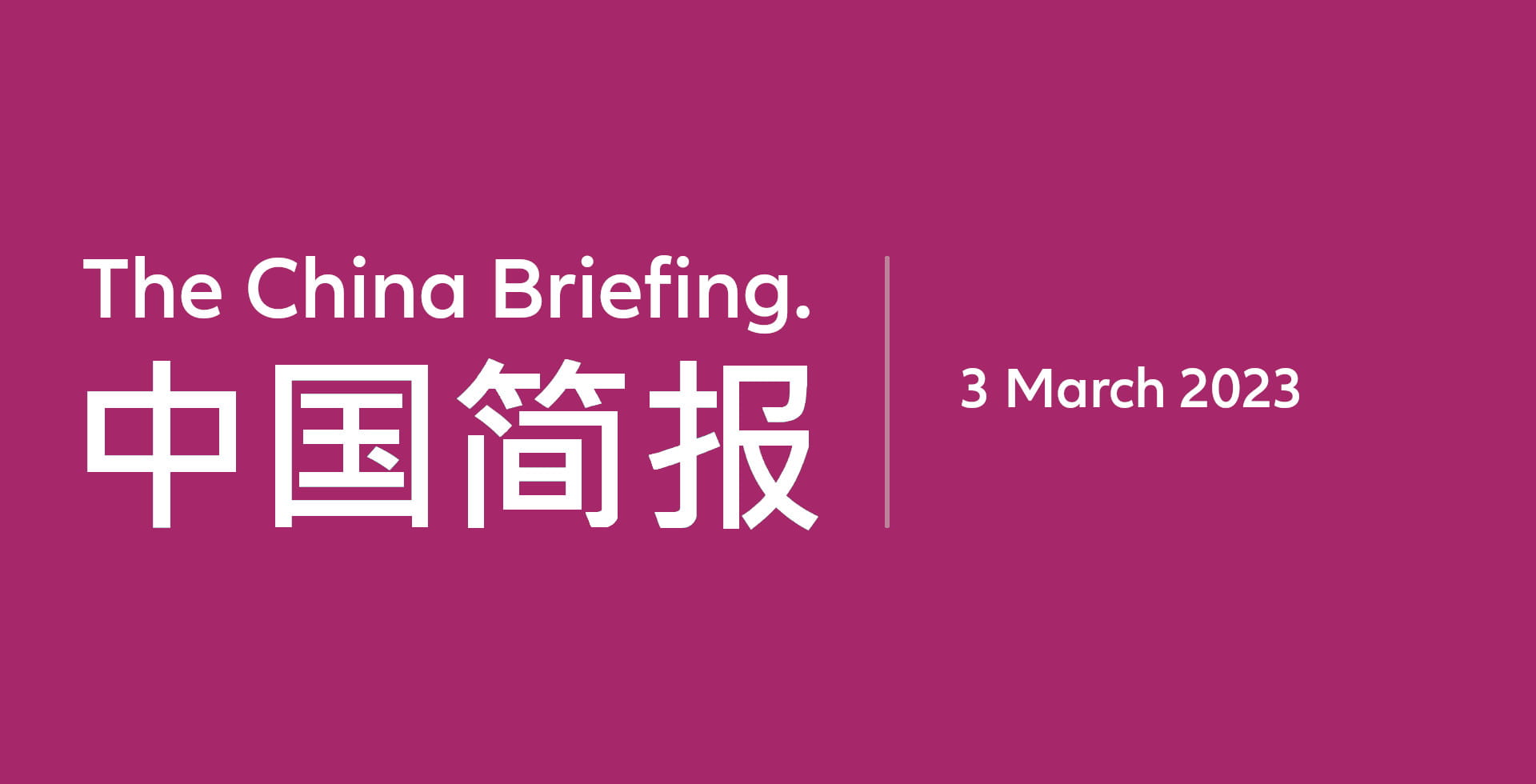The China Briefing
Searching for the green shoots

Please find below our latest thoughts on China:
- China equities have continued in consolidation mode in recent weeks, especially offshore markets.
- While offshore market performance remains ahead of China A shares since the low point last October, the gap has narrowed. And year to date, the MSCI China A Onshore Index is ahead of MSCI China.1
- Looking ahead, a key question is whether the hope of China’s recovery post Covid reopening will be matched by economic reality. Trying to assess this is a challenge for markets at the moment as there is somewhat of an information vacuum.
Chart 1: MSCI China A Onshore and MSCI China performance since 31 Oct 2022 (USD, rebased to 100)

Source: Bloomberg as at 1 March 2023
- February is pretty much a blank spot for tracking the economy - due to the distortions created by the shifting lunar new year holiday dates, China does not report separate January and February data for most indicators, instead bundling the two months together for release in March. And many companies are in communications black-out ahead of the upcoming reporting season.
- In the short term, global investors have seemingly been in a ‘better to travel than to arrive’ mindset, locking in some profits especially in the context of a more hawkish US Federal Reserve.
- And following a painful 18 months of domestic equity returns, local investors are in a ‘show me the money’ frame of mind, seemingly waiting for better news on the economy.
- As an example, the level of Southbound Stock Connect flows (ie, mainland China investors buying into Hong Kong-listed equities) is only around 20% of the amount of foreign investor flows Northbound into China A Shares since November. And household cash deposits in China continue to rise.2
- The level of local margin trading in China A shares, a good real time sentiment indicator, has increased somewhat since Chinese New Year but not dramatically.
Chart 2: Margin trading outstanding balance in China A-Shares (CNY billion)

Source: Wind as at 1 March 2023.
- What economic data there has been recently does point to some green shoots of recovery. The manufacturing PMI in February came in at 52.6% compared to 50.1% in January3 (a figure above 50 reflects economic expansion). And property sales in larger cities are also seeing a pick up. But a clearer picture of the state of the economic rebound will not be available until mid-March.
- In the meantime, there will be a lot of attention on the National People’s Congress which kicks off this weekend.
- On Sunday (5 March), the country’s gross domestic product (GDP) target for this year should be announced. This is expected to be in the range of 5% to 5.5%.
- All 31 provinces have announced their growth targets for the year, varying from the low end of “above 4.5%” in Beijing, to the high end of “above 9.5%” in Hainan.4 This is the island in the south known as ‘China’s Hawaii’ which will be one of the biggest beneficiaries of domestic tourism and ‘revenge spending’.
- The weighted average 2023 growth target for the 31 provinces is 5.6%.5
- It is rare for China to miss its GDP target – it has only happened in 4 of the last 25 years, including last year.6 So, there is an incentive to set a target that generates confidence, while leaving enough margin to be beaten.
- Coming days will also see a significant reshuffle of China’s most high-profile economic policymakers. The coordinator of economic and financial policy (Liu He), the chief financial regulator (Guo Shuqing) and the governor of the People’s Bank of China (Yi Gang) are all expected to retire at the upcoming annual legislative session.
- This outgoing trio pioneered many of the most influential economic initiatives of the last decade. They were appointed in the years following the massive fiscal stimulus in 2008 post the Global Financial Crisis.
- Now widely regarded as a policy mistake, the stimulus was seen as leaving a dangerous legacy of sharply higher leverage which, if left untackled, had the potential to create a financial crisis that could derail China’s economic ambitions.
- Therefore, much of China’s recent economic policy – including the clampdown on shadow banking and targeting highly leveraged property developers – has been part of a broader financial de-risking campaign.
- Regardless of which individuals end up taking over these key positions, it is likely we will see a somewhat different balance between growth and risk prevention going forward. Although the goal of preventing financial risk will not be completely jettisoned, there may well be some rebalancing away from the strict financial discipline agenda of previous years.
1 Source: Bloomberg, 1 Mar 2023
2 Source: Gavekal, 27 Feb 2023
3 Source: National Bureau of Statistics of China, 1 Mar 2023
4 Source: Nomura Securities, 28 Feb 2023
5 Source: Nomura Securities, 28 Feb 2023
6 Source: HSBC, 24 Feb 2023


